
My name is Rob and I am a Final year Industrial Design Student at Loughborough Design school. I am passionate about Inclusive Design and on the side of my studies run an Inclusive Design Consultancy called INCLUS.
Final Project
Phoenix – Making exercise accessible for those with Multiple Sclerosis
Phoenix is an innovative cooling vest for individuals with Multiple Sclerosis who suffer from heat sensitivity during endurance exercise.
The interwoven thermoelectric fabric creates a Peltier cooling effect, comprising of a compressing cooling layer onto the skin whilst dissipating heat into the air.
Heat flux sensors and an interactive central panel device automate the cooling process and control the thermoelectric material by monitoring core body temperature.
The thermoelectric fabric and ventilation fins on the upper back keep the user cool and ultimately stabilise their core temperature.
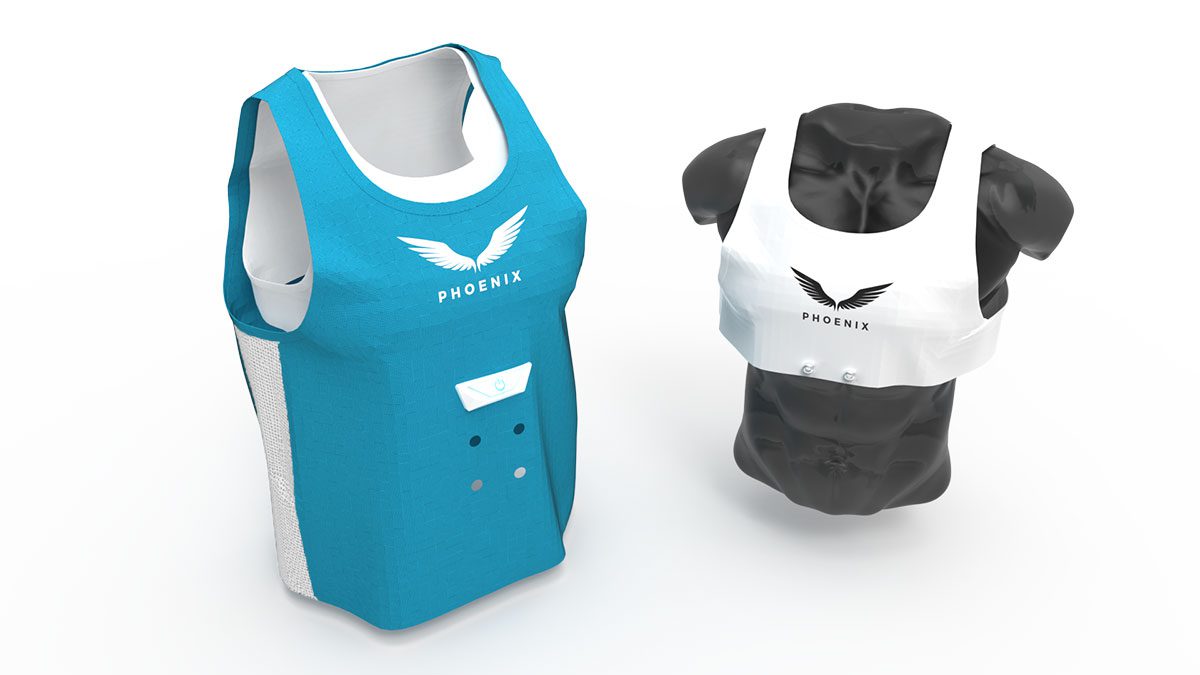

Empowering you to move
Heat sensitivity is a major symptom that over 50% of individuals who have Multiple Sclerosis experience. Heat sensitivity happens when the individuals core temperature rises due to a warm environment or during exercise. A change in core body temperature of as little as 0.2°C can cause an individuals MS symptoms to worsen such as tremoring, fatigue, spasticity, numbness, and many more.
Phoenix aims to combat heat sensitivity by cooling the individual and consequently keeping their core temperature at a stable rate during exercise. Phoenix empowers individuals with MS to be able to go running, cycling, hiking, walking, and partake in any endurance exercise they want to do.
Innovative Thermoelectric fabric
The inner vest is made of an interwoven thermoelectric fabric (developed by the Leibniz Photonic Institute, Germany). This provides the cooling effect to the user, with a focus on cooling the upper back and the middle of the torso. Powered by the rechargeable battery pack, held within the inner vest, the thermoelectric fabric utilises the Peltier effect to cool the user. The Peltier effect triggered by an electric charge passing through the fabric causes one side of the fabric (the side touching the users skin) to be cold and the other side of the fabric (open to the air) to become hot. The effect of having the electric controlled cooling fabric against the skin helps improve the bodies natural thermoregulation processes. This is due to the fact that individuals with MS struggle to control their core temperature during exercise due to the effect that MS has on the center for thermoregulation within the brain called the Hypothalamus.
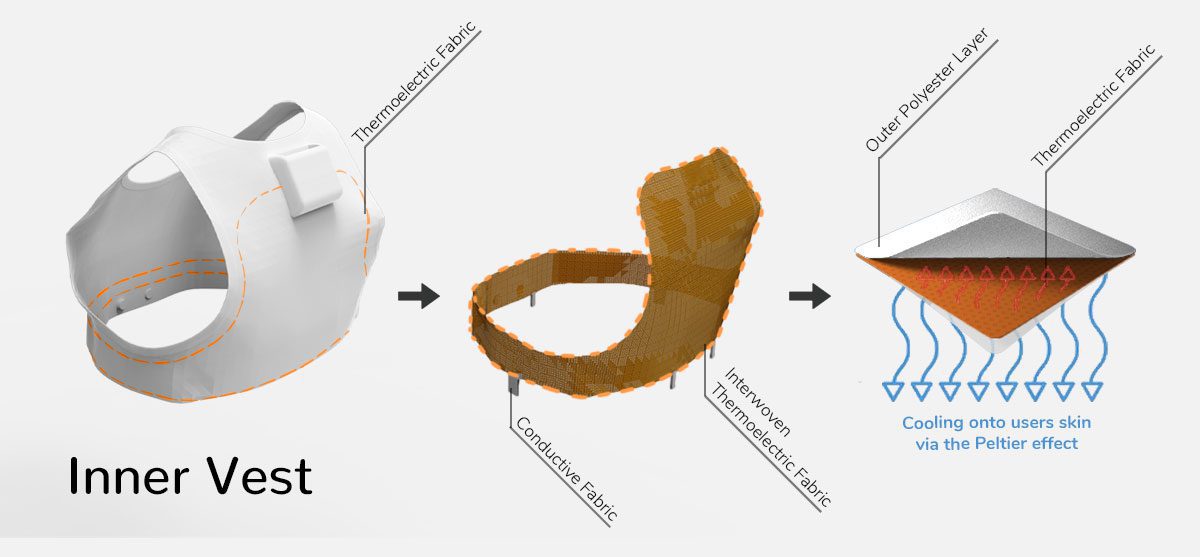
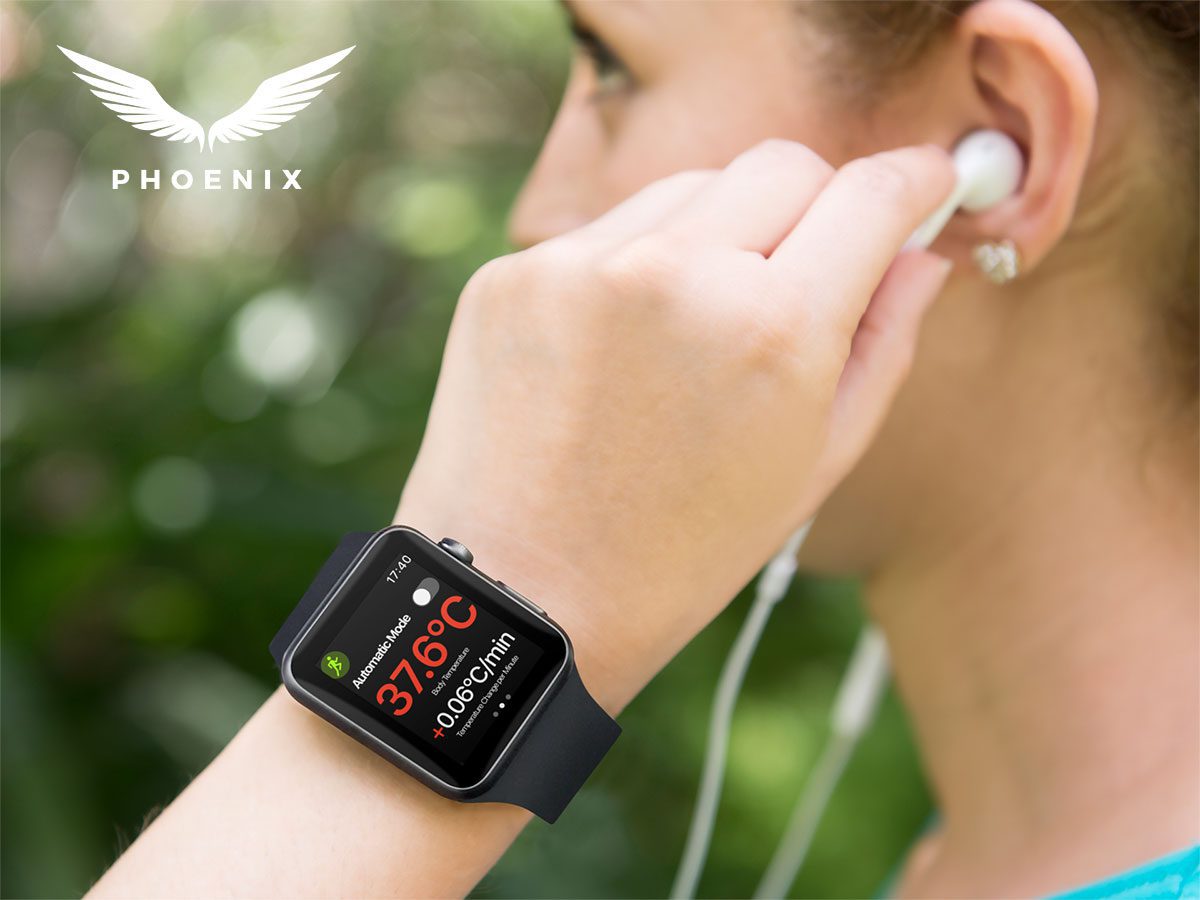
Phoenix Sports Vest app
The Phoenix sports vest app seamlessly integrates with all market leading watch fitness/workout apps. The app offers two modes: automatic mode, where the vest cools the user automatically, and control mode, allowing users to manually adjust the cooling power of the vest. This integration provides users with a convenient and customisable experience, ensuring accurate activity tracking while optimizing comfort through tailored cooling adjustability.
Inclusive Design Focus

Throughout the development of project Phoenix the main focus has been around making the solution fully inclusive. Consequently there are multiple features throughout the vest that are designed with inclusion as a key consideration. For example in the image above the Velcro side attachments give accessibility to users who may struggle with movement or dexterity and enable them to put the outer vest on.
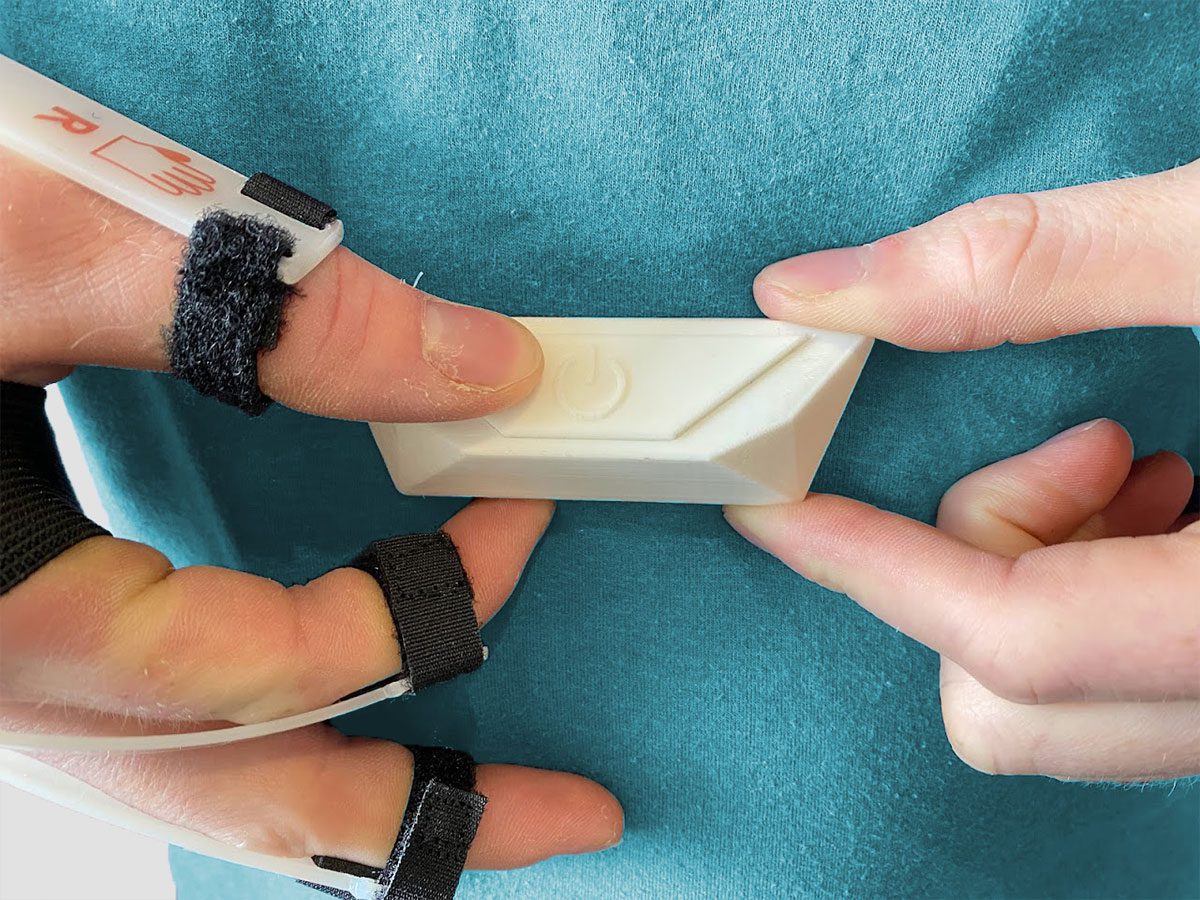
To ensure that Phoenix has been designed with inclusivity in mind a multitude of participants who have MS with a range of differing symptoms have been involved throughout user testing and the development of the product. Experts and key stakeholders have also been involved and impairment tools have been used such as the dexterity simulation gloves shown above on the left hand. The above image shows the central panel which has been designed in an inclusive manner. It engages all of the users sensors from the tactile feel of the buttons surface, the tactile feeling of the raised on/off symbol, the light that shines through the button for confirmation of activation, the soft force required to press the main button, and lastly the audible pen button like confirmatory clicking sound to ensure the user they have activated the vest.
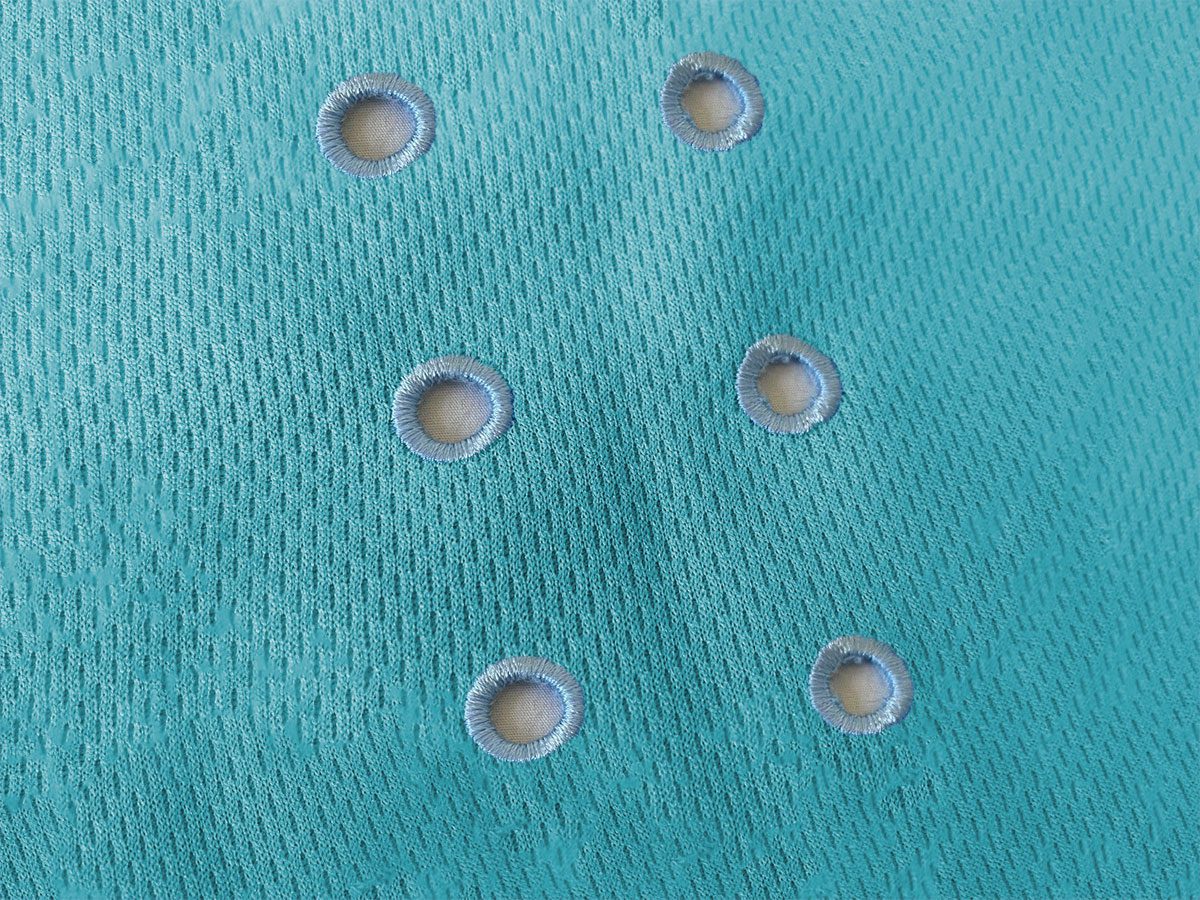
Phoenix is designed to be inclusive for all gender types and body shapes, as the inner vest and outer vest are able to be adjusted to the majority of users torso shapes. A key aspect of the vests functionality is the inner cooling vest that is required to be close to the skin. The connection to the inner vest is facilitated by the holes in the outer vest shown in the image above, this allows for sizing flexibility and ultimately for the product only needing to be sold in 2 sizes of small and large. The innovative sizing system that adjusts to your size of torso makes Phoenix a sustainable solution as less vest sizes would need to be made and so less material would need to be produced.
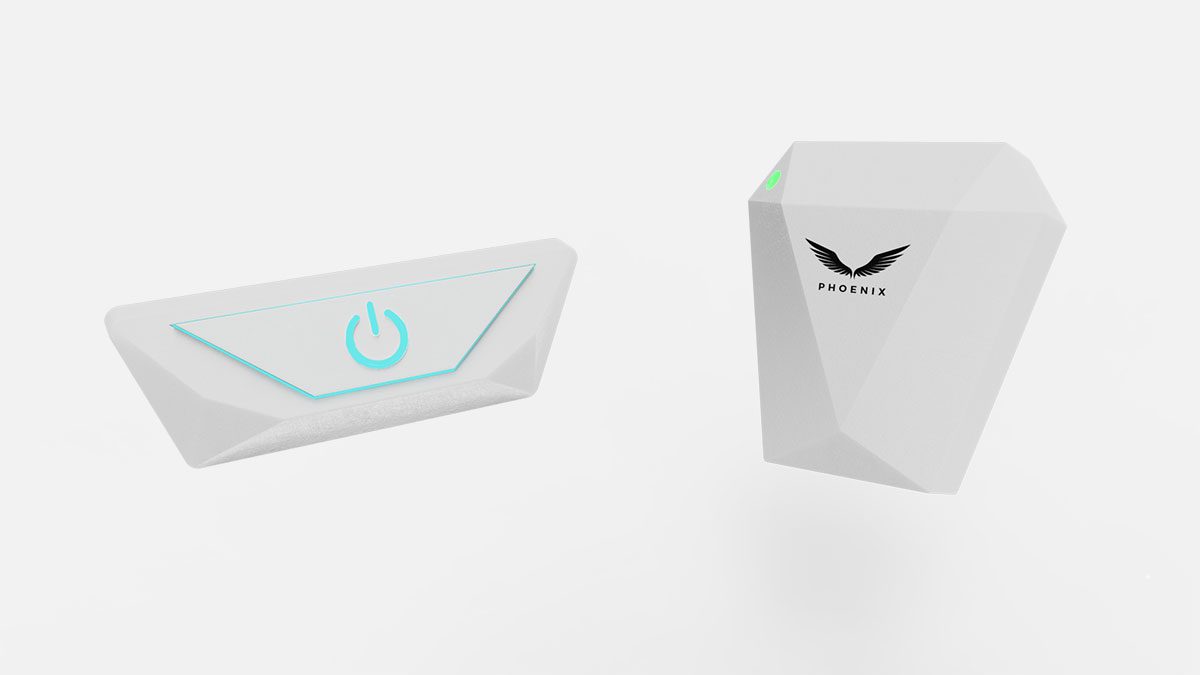
Battery Holder
The Central Panel (on the left) and the Battery Holder (on the right) are the two main features of the vest that influence the thermoelectric fabric. The Battery Holder contains a rechargeable Lithium Ion battery that can be recharged via a micro USB. The battery is connected to the inner vest via the battery holder popper connectors. These are held within the pocket on the upper back of the inner vest. The Central Panel is the main feature that turns the vest on and off. It is also connected to the inner vest’s heat flux sensors that record the users core body temperature and sends this data to the Phoenix sports vest app. The central panel is also connected via conductive poppers, through the users desired set of sizing holes on the outer layer of the vest and the two female popper connectors on the inner vest adjustable torso belt.
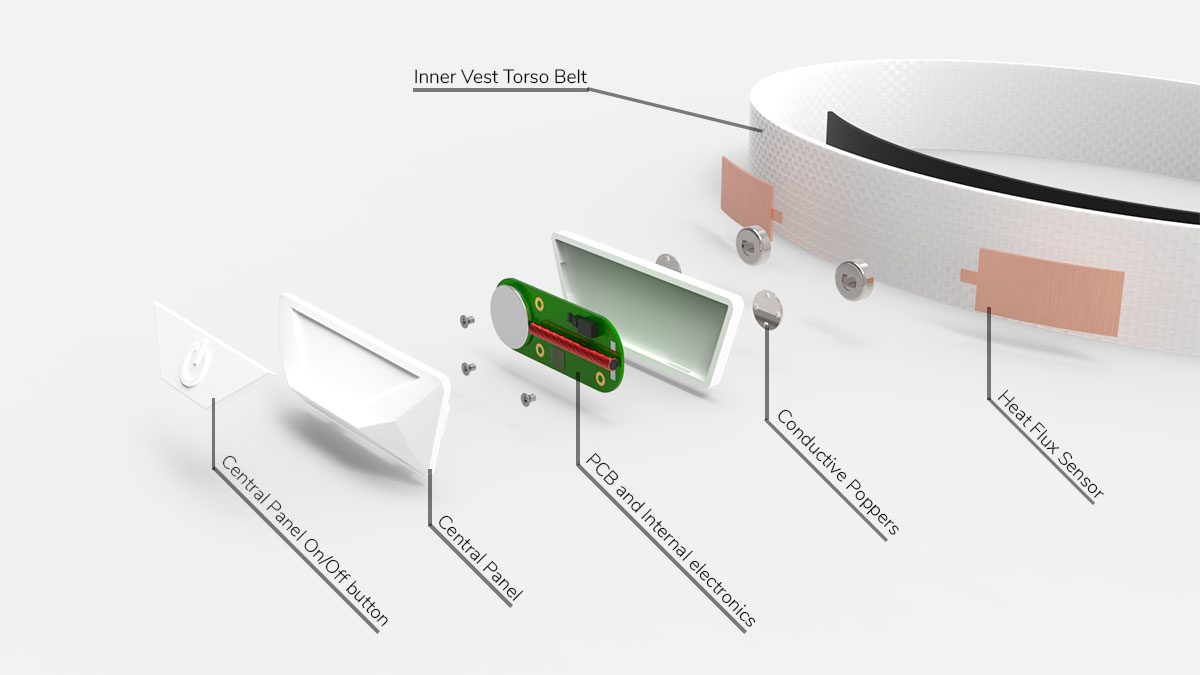
Above is an exploded view of the main components utilised within the central panel and inner vest. These are used to measure the users core body temperature and communicate information to the Phoenix sports vest app. Heat flux sensors are used to collect the users core temperature data to control the cooling power of the interwoven thermoelectric fabric within the inner vest. The central panel is made up of similar electronic components to those used within a heart rate monitor with the main ones being a 3V battery and a Bluetooth transmitter.

The fins/vents located on the upper back of the outer vest are both used for functionality and aesthetic purposes. As the user is running or engaging in an endurance related sport or exercise, the fins help to catch the air running over the users shoulders and redirect it to the thermoelectric fabric. This consequently helps the thermoelectric fabric stay cool and therefore have an increased cooling power and efficiency. The fins make what is a disability focused product into a solution that is attractive, of a desirable aesthetic, and aligns with the phoenix brand.
Awards
- Shortlisted for the RSA SDA 2023 – Amplify Connections
- Diploma of International Studies (DINT’s)
- World Student Starpack – Highly Commended International Award
Work Experience
Within my placement year I worked for 6 months as an Industrial Designer within the Deodorants R&D department at Unilever. This experience was incredibly formative for me as a young designer and is where I was able to hone and develop my skills within the space of Inclusive Design. My main focus within the placement was on a deodorant project called Project Phoenix where we were aiming to design a fully inclusive stick deodorant product solution for the brand Sure (Degree) to help those with upper limb differences to be able to use our stick deodorant packaging.
Visionary Thinkers
Visionary Creators
Visionary Makers